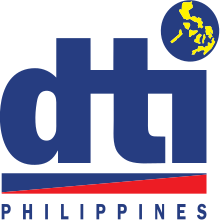Department_of_Trade_and_Industry_(Philippines)
Department of Trade and Industry (Philippines)
Executive department of the Philippine government
The Department of Trade and Industry (Filipino: Kagawaran ng Kalakalan at Industriya, abbreviated as DTI) is the executive department of the Philippine government responsible for the advancement, promotion, governance, regulation, management and growth of industry and trade.
This article needs additional citations for verification. (February 2016) |
Department Order No. 19-18, s. 2019, laid out the organizational structure of the department into the following functional groups: Competitiveness and Innovation Group (CIG); Consumer Protection Group (CPG); Industry Development and Trade Policy Group (IDTPG); Management Services Group (MSG); Regional Operations Group (ROG); and the Trade Promotions Group (TPG).
Its hierarchical organization include 27 foreign trade service posts, 17 regional offices (including Negros Island Region), 87 provincial/city/area offices, 12 bureaus, 4 attached agencies, 7 attached corporations, and 8 services offices.
The department is headed by a Secretary (equivalent to Minister) and assisted by Undersecretaries (equivalent to Deputy Minister) which take charge of certain sub-department each, and Assistant Secretaries which serve as specialized assistants of the Secretary.

